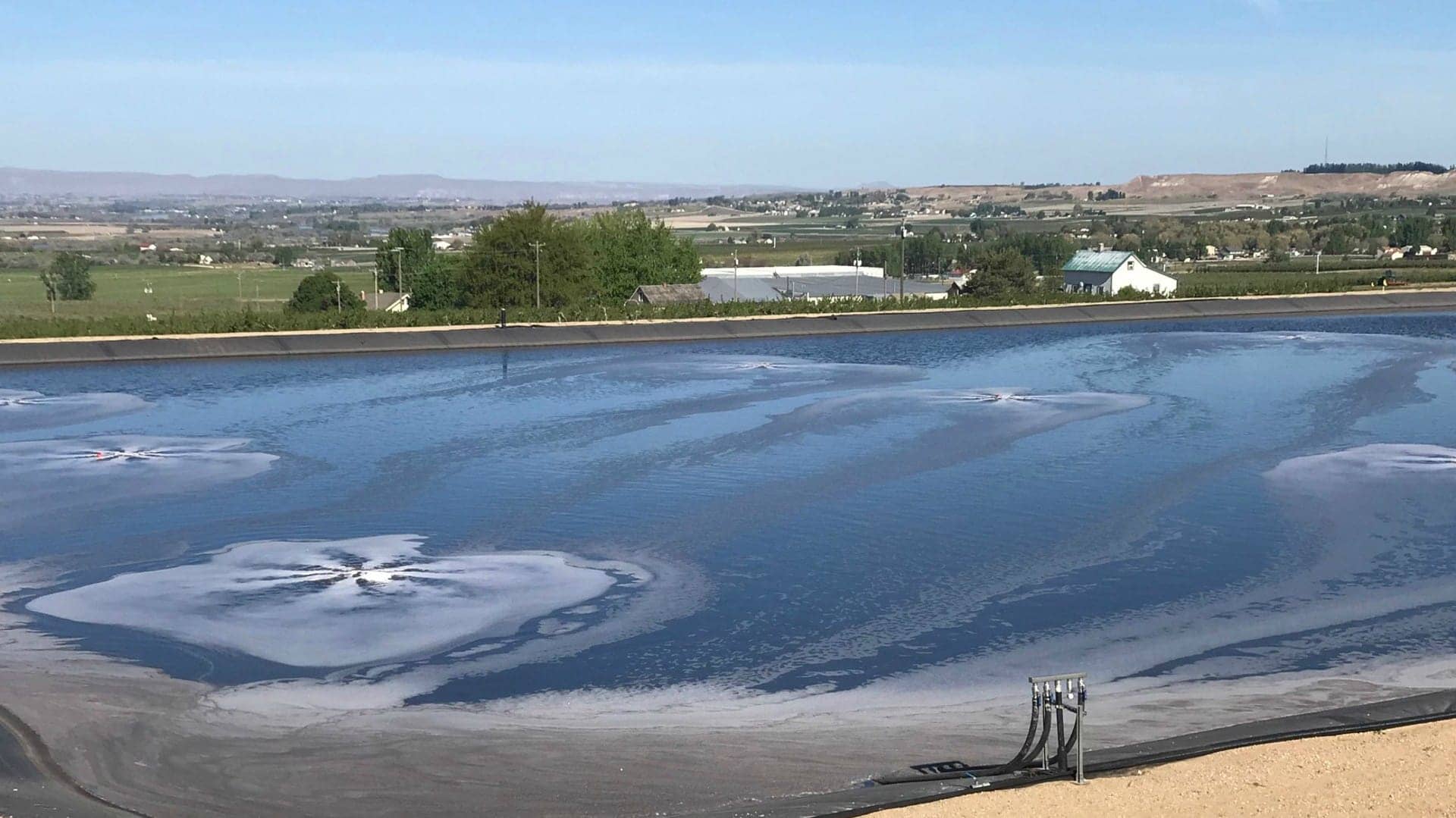Wastewater lagoon foaming can seem alarming, but it’s usually not a big deal and can be easily remedied. In this two minute video from our Lagoons Do It Better channel on You Tube, Patrick Hill gives a quick overview of the causes of, and solutions to, wastewater lagoon foaming. Watch the video and read below for more detail.
Causes of Wastewater Lagoon Foaming
Foaming in aerated wastewater lagoons or MBBRs (like our NitrOx® Lagoon Ammonia Removal Reactor) can be caused by a variety of factors, but the two most common are surfactants and new bug growth at startup.

Surfactants and Detergents: Surfactants, which are commonly found in household and industrial detergents, can enter the wastewater treatment system and create foam due to their surface-active properties. Surfactant foam is generally lighter than startup foam and can resemble soap suds.
New bug growth: Foam production is typical at the startup of a new aeration system or MBBR and should be anticipated. This foam is indicative of an actively growing biomass—a good thing!—as the lagoon or reactor establishes the bacterial population that will provide treatment.
When young bacteria grow rapidly, they generate foam that is white and billowy. As the bacteria in the lagoon or reactor mature, this foaming will subside.

New bug growth can also happen seasonally as temperatures change, where you get die off at times in the spring or over the summer and regrow bugs in the fall.
Other common causes of wastewater lagoon foaming
- High Fats, Oil and Greases: Check for FOG in the influent; if levels are high, upstream treatment must be corrected.
- Spike loadings: Atypical levels of BOD or ammonia may lead to rapid bacterial growth as the biomass acclimates to the new load.
- pH: Ensure influent pH is in 7–8.5 range.
Upset conditions that can cause lagoon foaming
Less frequently, upset conditions can cause wastewater lagoon foaming. Nutrient deficiency (more common in industrial facilities) can can cause a grayish slimy foam.
Dark brown, thick scummy foam could occur if old sludge makes its way into the reactor after dredging.
How to control wastewater lagoon foaming
- Spray it: For a quick short-term fix, simply use a hose or pressure washer to spray water or clean effluent to knock down the foam.
- Use a chemical defoamer: Avoid silicone-based defoamers as they can negatively affect lagoon biology. We recommend Aquafix’s DeFoam 3000. Follow dosing instructions carefully as overdosing can produce more foam. Defoamer will begin working with a few hours and will need to be reapplied periodically.
With the exception of the startup period, for any other extended period of foaming we highly recommend pulling and testing foam samples for the presence of filaments and other microorganisms to understand and correct the root cause of the foaming.
Subscribe to our You Tube channel
Our Lagoons Do It Better channel on You Tube has dozens of free videos on a variety of lagoon topics—get a two minute lowdown or a deeper dive into common lagoon issues like odor, sludge, duckweed, and ammonia. Subscribe so you’ll be the first to know when we post a new, informative lagoon video!

